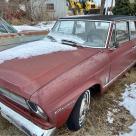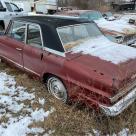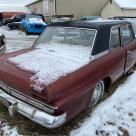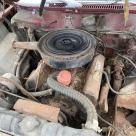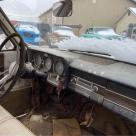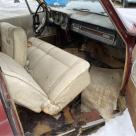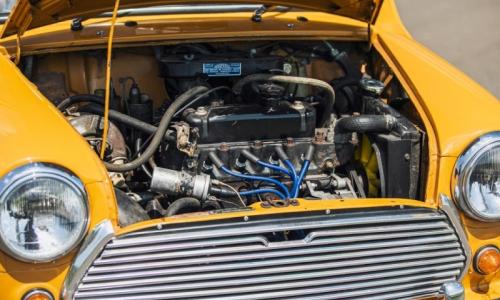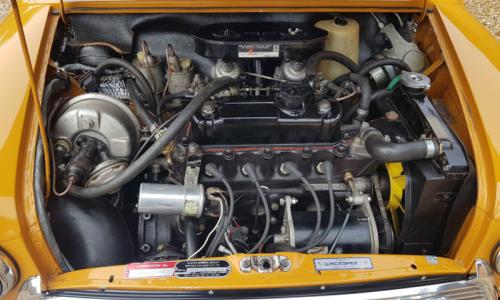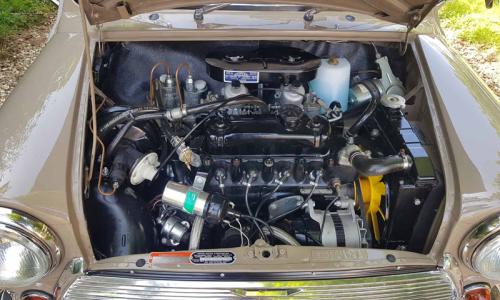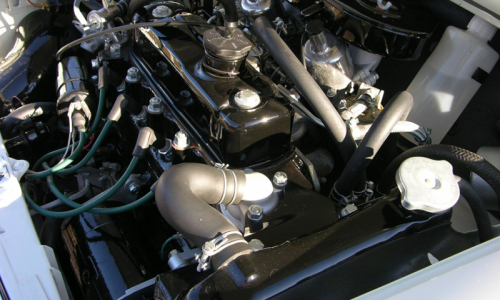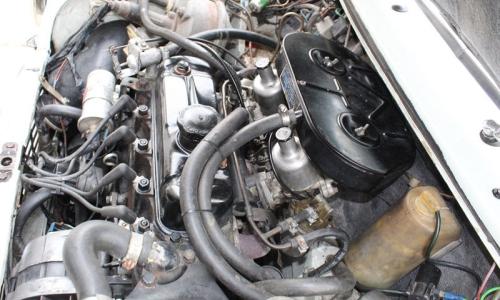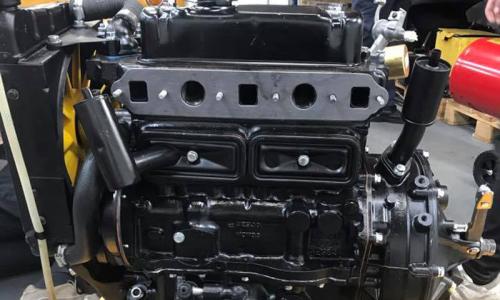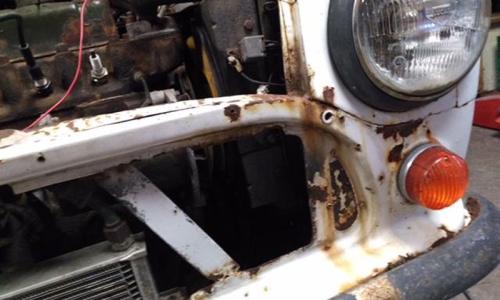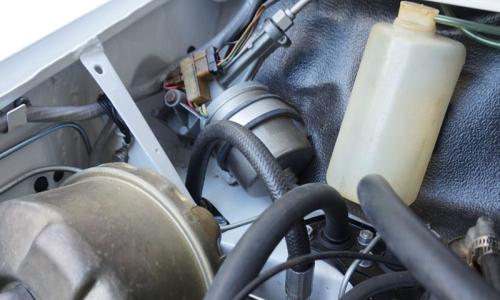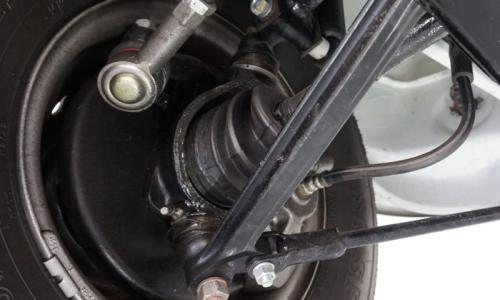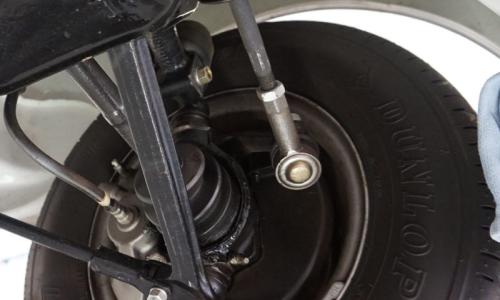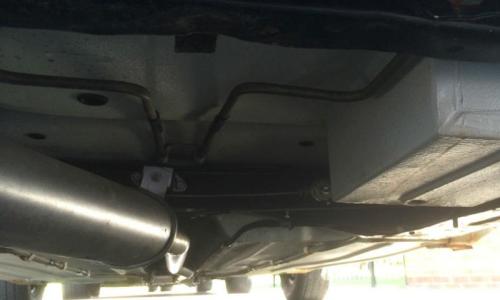For sale: 1966 2 Door Sports Sedan Daytona Studebaker
Specifications
- Suspension: The vast majority of MKIII Cooper S cars were fitted with hydrolastic suspension (like all previous Cooper S variants). The part numbers are (front: 21A2012) & (back: 21A2014). Police cars were equipped with different displacer units with part number 21A2010 both front and rear. Several books and forum discussion suggest that some very late cars had dry rubber cone suspension, but there is no factory documentation supporting this assertion. All MKIII Cooper S cars have redundant shock absorber mounting points on their inner mudguards – on account of the fact that other models in the mini range had rubber cone suspension.
- Engine paint colours and finishes: The normal green engine colour finish changed to black very early on in MK3 production, and therefore some very early cars may have had green engines the same as the MKII. The vast majority of cars had Both the engine and its accessories painted black. There were no stickers / badges on the rocker cover. The coil should be a natural metal finish.
- Component part specs and ID numbers:
- Cam shaft is marked AEG 542 with a spider drive for the oil pump instead of the pin drive found on earlier models.
- Cylinder head is part # 12G1805, stamped adjacent to the thermostat housing. The casting number is 12G940.
- Crank was no longer Nitrided, but was of the cheaper Tuftrided variety.
- During production, the original forged valve rockers were changed to the pressed steel type.
- The engine can still be identified by the additional stud bolt on the engine head, tappet chest covers and the Duplex timing chain (i.e. 11 studs total vs the standard 9).
- Engine cooling: A three core radiator was standard as per the MKII S. Only the lower part of the two piece radiator cowling and some of the brackets are unique to the Cooper S in comparison to other models in the range, due to the larger size of the radiator. A 13 row oil cooler was fitted (same as the MKII). An 11-blade plastic fan was applied to most UK market cars, but a 6-blade steel fan is believed to have been applied to some export market cars. All cars had the grille panel with the diagonal strut, to clear the central horizontally mounted oil cooler.
- Brakes: The brake Servo was a Lockheed “Type 6” unit (i.e. 6 inch in place of the older 5.5” unit). This was significantly different from the earlier unit. Export cars to France and Benelux had a transparent brake reservoir. Front discs (7.5“) and rear drums are the same as on a MK2. It does not appear that dual circuit brakes were ever fitted to the MKIII Cooper S.
- Tyres: Dunlop 145-10 SP68 tyres (with tubes) were specified as standard on the MKIII S. Both 3.5” and 4.5” wide ventilated rims were available, finished in silver paint.
- Electrics:
- All MKIIIs had negative earth electrics.
- The original battery was a CL7 (or dry charged CLZ7 for some export markets), rated at 34Ahm as on the MKII, but the MKIII fitted with an alternator had a higher capacity 45Ah type CA9/7 battery. D0uring production, a new Lucas ‘Pacemaker’ battery with a translucent case and automatic filling was introduced (believed to be from commission number N20D/1157.
- All police spec cars had an alternator – and apparently the alternator was a more commonly fitted item (many cars have since been converted to alternator).
- The ignition coil is fitted with a bracket to the front cylinder head stud, at the end above the clutch housing.
- Lighting: Headlamps were sealed beams with built in side lamps (parkers). This was the case for British and Japanese market export cars. For other RHD markets, the cars had sealed beams, and separate side lamps. LHD markets are supposedly less consistent: Canadian exports likely had Sealed beams and separate side lamps. Cars to France had non-sealed beam headlamps with yellow bulbs and built-in side lamps. Most cars for Europe (except France and Italy) had non-sealed beam units and built-in side lamps up to commission number N20D/140, but were fitted with sealed beam lamps thereafter. These had built in side lamps for Germany, Denmark and Austria, but cars for other European markets had separate sidelamps. All MKIII cars had noticeably larger side lamp Plinths (on the lower fender panels) when compared to earlier cars.
- Horn: A single clear hooter horn is fitted to most cars. However, several export cars may have twin horns (twin pitch high and low note horns were a legal requirement in France, for example).
- Exhaust system: The MKIII S has two silencer boxes fitted. One narrow silencer sits at the rear of the centre tunnel in the floor pan, and a fatter/shorter silencer sits under the boot floor, in the part of the exhaust pipe that is angled toward the rear left corner of the car.
- Fuel system: Twin SU HS2 1.25” carbs were applied. Specification of left carb is CUD9123, and right hand carb is CUD9124). The standard needle is “M”. The damper springs are red, while damper caps are knurled and made of black plastic. The HS2 has a fatter dashpot housing and shorter neck than the HS4 – apart from being a different throat diameter. An SU electric fuel pump of type AUF201 was applied, fitted as usual to the rear subframe like earlier S cars.
- The corner of the air filter housing was cut off / flat in the corner, to allow clearance of a new semi circular washer bottle now fitted to the bulkhead.
- Wipers/washers: Two speed wipers may have been fitted to some export models, but the UK cars had single speed wipers, which parked in front of the passenger. Early MK3s had the same mechanical windscreen washer pump as the MK2. From Commission number N20D/865 it appears that a different type of washer is fitted, with a shorter barrel for the plunger and semi-circular rather than round water container. In some export markets they may have required Thermal control unit (preventing the wipers from being overloaded), and induction heaters for the carburettors.
- Power and performance specs:
- Compression is 9.7:1
- 76 bhp at 6,000 RPM
- 79 lbf. Ft torque at 3,000 RPM
- 0-100 km/hr = 10.4 seconds
- Gearbox: As standard, an all synchromesh gearbox was fitted with slightly different ratios as set out below:
- First: 3.33:1
- Second: 2.09:1
- Third: 1.353:1
- Fourth: 1.00:1
- Reverse: 3.35:1
A range of Special Tuning part options remained available including:
- Twin 1.5” HS4 carburetors;
- Weber twin choke Carburetor;
- Competition Clutch;
- Lightened fly wheel;
- Alternative Camshafts;
- Competition exhaust manifold;
- Competition Pistons;
- Competition valve springs;
- Competition oil cooler;
- Full length sump guard;
- Alloy wheels;
- Wheel arch extensions;
- Lightweight seats;
- Alloy (or later, fiberglass) body panels;
- Rally-spec front hydrolastic suspension displacers were available, marked with a red band (part number 21A1819);
- Rear anti roll bar;
- Competition oil cooler;
- Magnesium minilite wheels;
- Close ratio gearbox (see specs below) - Straight cut close ratio or standard ratio gearbox; and
- Sump guard.
The above items are detailed in in tuning book publication C-AKD 5096. See the full publication at the following link: https://mk1-performance-conversions.co.uk/pdf/AKD-5096.pdf
Special Tuning Close ratio gearbox specifications:
Overall ratios (based on final drive type chosen: a customer could select which final drive type they wanted):
[Insert table from text here]
Vehicle location
United States , Ohio , Woodville
1966 Studebaker Daytona Sport Sedan, found on Facebook Marketplace in February 2023. This has the Thunderbolt 283 VY. It does run according to the seller, but has a bad frame, (virtually no floors), but a lot of great parts. The seller noted that the dash is good, even seats look good, obviously need some elbow grease, door panels are decent as well. Located in Woodville Ohio. See the others on the register! And if you have one of these rare Stude's, please add yours.

